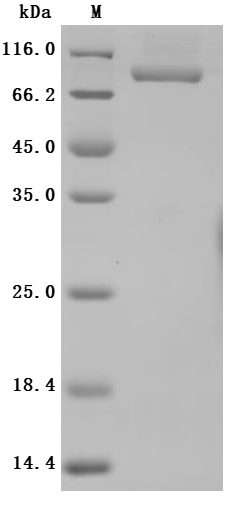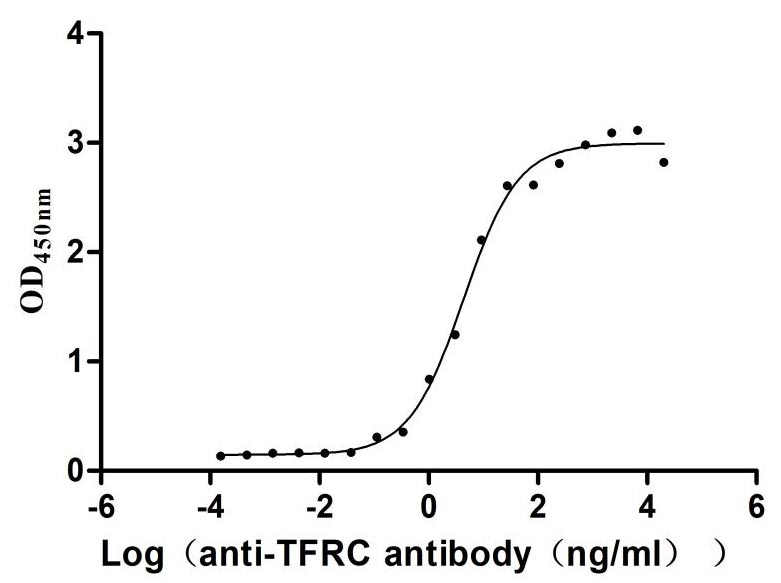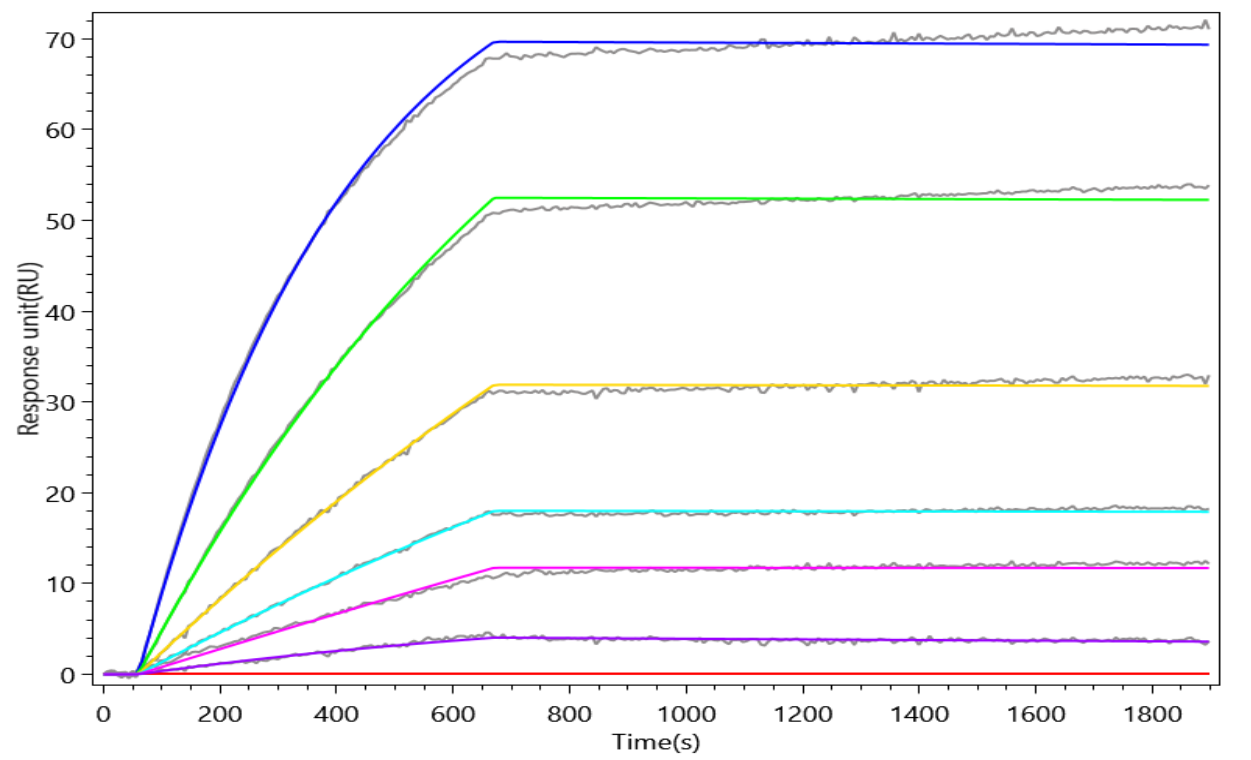The recombinant human transferrin receptor protein 1 (TFRC) was expressed in the mammalian cells. The human TFRC protein gene encoding fragment (89-760aa) fused with the 10xHis-tag gene at the N-terminus is cloned into a plasmid vector and then transfected into the mammalian cells. The transfected mammalian cells start expressing the recombinant TFRC protein, which is collected from the cell lysate. The purified recombinant TFRC protein undergoes rigorous quality control testing to ensure its identity, purity, activity, and endotoxin levels. Its purity is greater than 95% determined by SDS-PAGE and endotoxin content is less than 1.0 EU/ug measured by the LAL method. In a functional ELISA, immobilized human TFRC at 2 μg/mL can bind the anti-TFRC recombinant antibody (CSB-RA023441MA1HU), with the EC50 of 3.305-8.220 ng/mL.
TFRC, as an essential mediator of normal iron metabolism in the human body, primarily assists in the transport of transferrin inside and outside the cells and across the blood-brain barrier, maintaining cellular iron balance. TFRC is lowly expressed in all normal nuclear cells, but exhibits higher expression levels in immature proliferating cells and significantly increased expression in tumor cells. The upregulation of TFRC expression in malignant cells and its central role in cancer pathology make TFRC an attractive target for antibody-mediated cancer therapy. TFRC has also been an important target receptor for drug transport across the blood-brain barrier. By targeting TFRC on the surface of the blood-brain barrier, specific drugs can be delivered to the brain parenchyma, potentially improving the treatment of diseases such as Alzheimer's, Parkinson's, and acute stroke. Developing active mammalian TFRC proteins is of great significance in further studying TFRC's function and developing tumor drugs.










